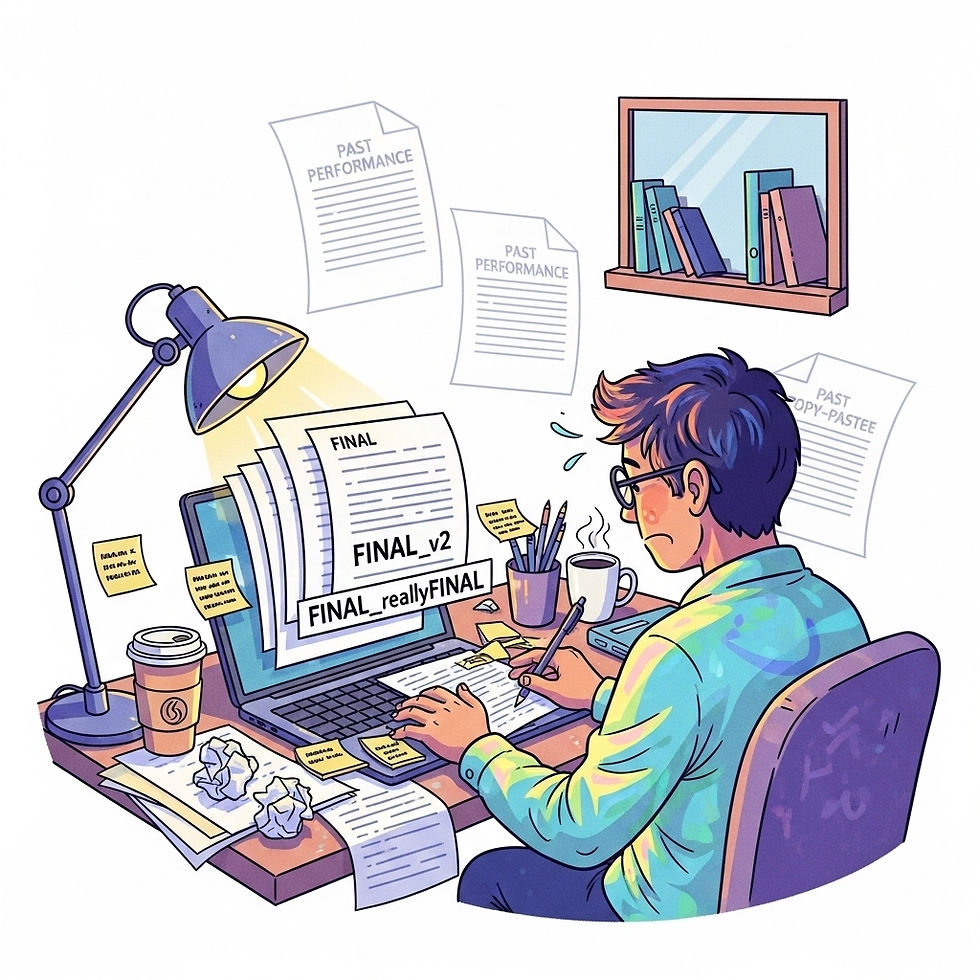The Essentials of Creating Winning Proposals
- Admin
- Oct 19
- 4 min read
Crafting a proposal that stands out and wins business is both an art and a science. I’ve seen firsthand how the right approach can transform a simple document into a powerful tool that opens doors. Whether you’re a small business owner, part of a lean team, or working in a mid-sized company, mastering the essentials of proposal writing is key to growth and success.
In this post, I’ll walk you through practical steps and insights to help you create winning proposals. You’ll learn how to structure your content, engage your reader, and present your value clearly and confidently. Let’s dive in.
Understanding Winning Proposal Essentials
Before you start writing, it’s important to understand what makes a proposal truly effective. A winning proposal is not just about listing your services or prices. It’s about connecting with your client’s needs and showing them why you are the best choice.
Here are some essentials to keep in mind:
Clarity: Use simple, direct language. Avoid jargon and complex sentences.
Focus: Tailor your proposal to the specific client and project. Show you understand their challenges.
Value: Highlight the benefits your solution brings, not just the features.
Structure: Organize your proposal logically with clear headings and sections.
Professionalism: Ensure your proposal is error-free and visually clean.
For example, instead of saying, “Our software has advanced analytics capabilities,” say, “Our software helps you track sales trends easily, so you can make smarter decisions faster.”

How to Start Your Proposal Strong
The beginning of your proposal sets the tone. It’s your chance to grab attention and build trust. Start with a brief introduction that acknowledges the client’s needs and states your understanding of the project.
Try this approach:
Personalize the opening: Use the client’s name and reference their specific situation.
State the purpose: Clearly explain what your proposal will cover.
Summarize your value: Give a quick preview of why you’re the right partner.
For instance, “Thank you for considering us to support your upcoming marketing campaign. We understand your goal to increase brand awareness and drive sales. This proposal outlines how our team will deliver targeted strategies that meet your objectives on time and within budget.”
This sets a positive, confident tone and shows you’re focused on their success.
What is a proposal win strategy?
A proposal win strategy is your plan for how to approach and secure a project through your proposal. It’s more than just writing; it’s about positioning yourself to win.
Key elements include:
Research: Know your client’s industry, challenges, and competitors.
Differentiation: Identify what makes your offer unique.
Compliance: Follow all the client’s instructions and requirements precisely.
Proof: Include case studies, testimonials, or data that back up your claims.
Follow-up: Plan how you will engage after submitting the proposal.
For example, if you’re bidding on a government contract, your win strategy might focus on demonstrating compliance with regulations and showcasing past successful projects in that sector.
By combining these elements, you create a proposal that not only meets expectations but also builds confidence in your ability to deliver.

Writing with Impact: Tips for Clear and Persuasive Proposals
Writing a proposal that resonates requires more than just good ideas. It demands clear, persuasive communication. Here are some tips I use to keep proposals sharp and effective:
Use active voice: “We will deliver the report by Friday” is stronger than “The report will be delivered by Friday.”
Keep sentences short: Aim for 15-20 words per sentence to maintain readability.
Break up text: Use bullet points, numbered lists, and short paragraphs.
Highlight key points: Bold or italicize important information to draw attention.
Avoid fluff: Every sentence should add value or clarity.
Also, be sure to address potential concerns upfront. For example, if timing is tight, explain how your team will manage deadlines efficiently.
Remember, your goal is to make it easy for the reader to say “yes.”
Leveraging Technology and Expertise for Better Proposals
In today’s competitive environment, using the right tools and expertise can give you a significant edge. I recommend blending proven methods with modern technology to streamline your proposal process.
Templates: Use customizable templates to save time and maintain consistency.
Collaboration tools: Platforms like Google Docs or proposal software help teams work together smoothly.
AI assistance: Tools that suggest improvements or check grammar can enhance quality.
Expert support: Consider partnering with services like Remote Proposal Desk for on-demand help with writing, compliance, and strategy.
This combination allows you to produce professional, compliant, and compelling proposals without the overhead of a full-time team.

Taking Your Proposals to the Next Level
Winning proposals don’t happen by accident. They require planning, practice, and continuous improvement. Here are some final recommendations to elevate your proposal game:
Review and revise: Always proofread and get feedback before submitting.
Track results: Keep records of what works and what doesn’t for future proposals.
Stay client-focused: Keep your client’s goals front and center in every section.
Be transparent: Clearly outline costs, timelines, and deliverables.
Follow up: After submission, reach out to answer questions and reinforce your interest.
By applying these principles, you’ll build a reputation for reliability and professionalism that clients appreciate.
Creating winning proposals is a skill that grows with experience and the right approach. Use these essentials as your foundation, and you’ll be well on your way to securing more projects and growing your business.
Happy proposing!




Comments